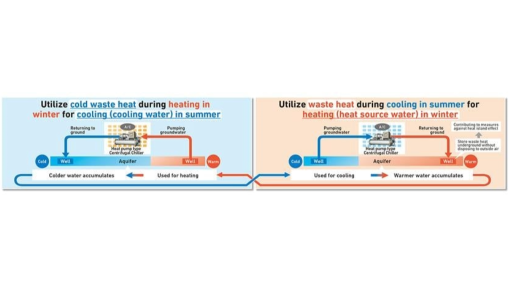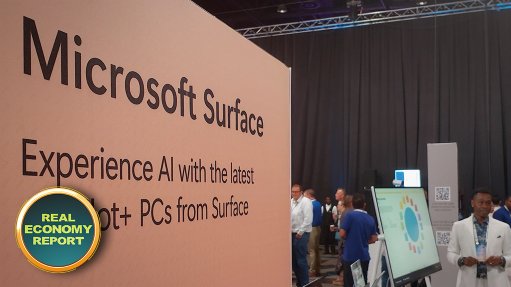Eskom reports initial success in avoiding prepaid meter catastrophe
Eskom has finally started a national update for the 6.6-million prepaid electricity meters under its control before they all become non-operational late next year. The utility said that the update, which has been under way for a little over a month, has been a success so far.
The update is necessary to avoid a date rollover issue that will stop all 70-million STS-compliant prepaid electricity meters in the world from vending electricity after 24 November 2024.
There are roughly 11-million meters that will be affected in South Africa, of which Eskom is responsible for updating 6.6-million. The responsibility for the rest is divided amongst 164 municipalities that have licensed electricity distribution zones.
A quirk in the way meters are designed has made the update necessary.
Don Taylor, the inventor of the first integrated prepayment meter, who is heading up the token identifier (TID) rollover communications drive on behalf of the Standard Transfer Specification Association, previously explained to News24 how the meters were designed.
Basically, meter designers needed a way to make sure that the numbers that users entered into their meters to load electricity credit were unique.
One of the ways this was done was to attach a sequence of the numbers in a token to the minute that the token was bought. That sequence of numbers is known as the TID.
This vending system currently works well, but a consequence of the time-based system means that the meters come with a built-in expiry date.
There were only so many minutes that the designers could allow to be attached to a token.
The more minutes that were programmed into the system, the longer the string of numbers that users had to enter into their meters would become. If the number string became too long, it would be difficult for users to load credit onto their meters.
So, the meter designers decided to make the number string 20 digits long, which meant that a total of 224 minutes (which is over 16-million minutes) could be programmed into the vending system.
The vending system began operating on 1 January 1993. There will be no more minutes to attach to a token on 24 November 2024.
Prepaid electricity meters will not be able to vend electricity after this date unless the meters are updated.
The update
It is reasonably simple to update an individual meter. Two unique 20-digit update tokens, known as key change tokens, need to be generated and entered into the meter and it will be ready to vend electricity beyond 24 November 2024.
The key revision numbers basically change the base date of the meter from 1993 to 2014, which means the expiry date is pushed back well into the future. The technology used to decrypt the token will also be made more secure at the same time.
There are two methods being used to get the key revision tokens into meters.
One involves sending a designated task team to each individual meter to generate and enter the update tokens on behalf of customers.
This has been used successfully by many smaller municipalities in South Africa who have also been able to recover revenue from breached or bypassed meters at the same time.
The other method, called the point of purchase method, is being used by Eskom. Customers are given the update numbers when they make a normal electricity purchase which they need to enter into their meters by themselves.
If a user fails to enter the update tokens into their meter, their meter will become non-operational from the moment the update numbers are generated.
This method has been used to perform the rollover by the City of Cape Town to great effect.
The City started performing rollovers in November of 2021. It recently announced that it has completed the update for over 500 000 meters, or roughly 84% of the meters it is responsible for.
Eskom gets going
In June of 2023, Eskom released a statement saying that it was set to start updating the meters it is responsible for across the country.
This followed a pilot project that the utility conducted in Gauteng where 5 800 meters were rolled over.
The first notice of a wider rollout was shared by Eskom on X, formerly known as Twitter, on 18 August.
In the next phase of the project, Eskom plans to get 389 000 customers rolled over, the utility told News24 in response to questions.
“The objective of this phase is to identify and address any challenges prior to a full rollout,” said Eskom.
Eskom is performing the update in phases, where residential areas will receive key revision numbers at different times.
The utility said that 80% of customers were able to perform the rollover without assistance in the areas where it has so far been performed.
“The success rate has been good,” said the utility.
The utility is confident that it will be able to finish the update "long before" November 2024, it said.
The progress of municipalities and metros can be tracked on a dashboard created by the South African Local Government Association. Authorities self-report their data on the dashboard meaning that there is a chance it is inaccurate.
Only 61 out of 164 municipalities with licensed distribution zones have indicated that they have started their projects. Many have not logged data on to the site.
Comments
Announcements
What's On
Subscribe to improve your user experience...
Option 1 (equivalent of R125 a month):
Receive a weekly copy of Creamer Media's Engineering News & Mining Weekly magazine
(print copy for those in South Africa and e-magazine for those outside of South Africa)
Receive daily email newsletters
Access to full search results
Access archive of magazine back copies
Access to Projects in Progress
Access to ONE Research Report of your choice in PDF format
Option 2 (equivalent of R375 a month):
All benefits from Option 1
PLUS
Access to Creamer Media's Research Channel Africa for ALL Research Reports, in PDF format, on various industrial and mining sectors
including Electricity; Water; Energy Transition; Hydrogen; Roads, Rail and Ports; Coal; Gold; Platinum; Battery Metals; etc.
Already a subscriber?
Forgotten your password?
Receive weekly copy of Creamer Media's Engineering News & Mining Weekly magazine (print copy for those in South Africa and e-magazine for those outside of South Africa)
➕
Recieve daily email newsletters
➕
Access to full search results
➕
Access archive of magazine back copies
➕
Access to Projects in Progress
➕
Access to ONE Research Report of your choice in PDF format
RESEARCH CHANNEL AFRICA
R4500 (equivalent of R375 a month)
SUBSCRIBEAll benefits from Option 1
➕
Access to Creamer Media's Research Channel Africa for ALL Research Reports on various industrial and mining sectors, in PDF format, including on:
Electricity
➕
Water
➕
Energy Transition
➕
Hydrogen
➕
Roads, Rail and Ports
➕
Coal
➕
Gold
➕
Platinum
➕
Battery Metals
➕
etc.
Receive all benefits from Option 1 or Option 2 delivered to numerous people at your company
➕
Multiple User names and Passwords for simultaneous log-ins
➕
Intranet integration access to all in your organisation





















